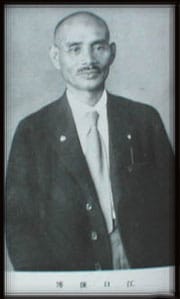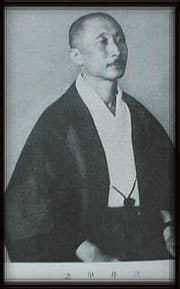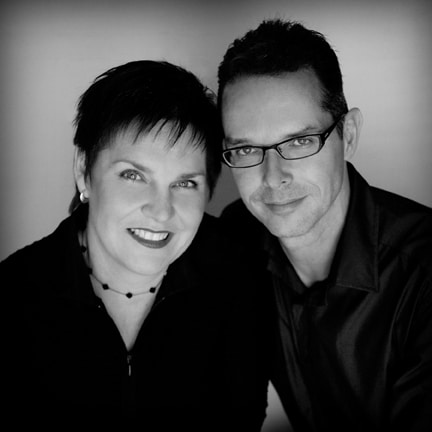

Eguchi Toshihiro
Research into a student of Usui Mikao who began his own school and form of palm healing.
There has been a great deal of interest in the history of the system of Reiki in recent years. This interest has occasionally hit brick walls and impasses and has not been unlike piecing together an historical jigsaw puzzle. There are pieces of information that people have been sitting on and then there are those pieces that remain unturned. Naturally, there will also be missing pieces to this puzzle, ones that have fallen through the cracks or been swept away never to return.
One person whose name recently has appeared on a number of different pieces of the puzzle is Eguchi Toshihiro. Some people today believe that he influenced the teachings of Usui Mikao particularly through his deep knowledge of Shinto practice[[Suzuki san, 2003]]. This is reflected largely in what we now know as Level II or Okuden in the system of Reiki.
From the early 1900s Japan was in a great popular health movement that continued well up to its entry into World War II. Not only was Usui developing a practice that would initially be taught to hundreds but so were many other seekers and searchers including Eguchi.
Japanese culture appears to have always held a special place for hand or palm healing within its natural laws. Palm healing in Japan has been practiced as an element of Buddhism since ancient times and similar concepts are currently in use with the popular deity Binzuru as an example. Here the devotee seeks to experience healing by rubbing his/her body’s physical equivalent on the statue of Binzuru.
Usui Mikao, the Usui Reiki Ryôhô Gakkai and Eguchi Toshihiro
In 2000 a book was published in Japan about Eguchi and his healing techniques called Tenohira-ga Byoki-o Naosu (Cure Your Illness with Your Palms) written by Mihashi Kazuo. This book sheds some light on what was taught and practiced by Eguchi. Though it does not mention Usui himself it does briefly discuss Eguchi’s dealings with the Usui Reiki Ryôhô from 1926 onwards. This is most likely the Usui Reiki Ryôhô Gakkai (Usui Spiritual Energy Healing Method Society) that still exists in Japan today. The author’s knowledge of Eguchi was drawn from a number of out of print books, written by Eguchi and others. Our article on Eguchi is comprised of factual information from Tenohira-ga Byoki-o Naosu with the noted inclusion of additional information from other sources such as Professor Judith Rabinovitch (her sources being various Japanese texts including a chronology of his life, prepared in ‘note’ form by Eguchi), Suzuki san and Chris Marsh.
Eguchi Toshihiro (photo on the left) was born on the 11th of April 1873 in Kumamoto, Japan and died on the 10th of June 1946. Around 8 years Usui’s junior, his health had never been very good and he often fainted and had chest problems. At one point in his youth he was not accepted into the ‘Army Cadet School’ due to problems encountered in the physical entry test. Later when he was admitted to the University of Tôkyô he fainted during the University examination. Eguchi was known to have dropped some subjects due to his weak health yet he still managed to graduate eventually becoming a principal of a school in Nagano.
According to Tenohira-ga Byoki-o Naosu, a lady called Tamura introduced Eguchi to the Usui Reiki Ryôhô in 1926; he was 53 years old at that time. Eguchi was living in Shibuya, Tôkyô and Eguchi wrote “50 yen was/is a high price to pay for admission to the group (nyûkai is the term), and moreover, at each meeting, one has to pay 1 yen[[Professor Rabinovitch states that 1 yen was likely 1-day’s wage. She also states that it is quite the norm in Japan to ask large fees for association membership]] further. So, while I thought that this [my training] was very important, having to pay fifty yen for this kind of thing just didn’t make sense to me.”[[Professor Rabinovitch quotes notes from Eguchi, 2004]] Eguchi believed that people practising palm healing should never ask large fees for the service as it is a natural gift that everyone is born with and he also believed it may have been possible to collect a person’s karma. He also noted that a current teacher of the Usui Reiki Ryôhô was Taketomi Kanichi (1878-1960) who, as a Rear Admiral in the Japanese navy, was well off financially. After 2 years Eguchi took action saying he had ‘seen through to the unjustness (iwarenaki wo) of the high fees’ writing a formal letter of resignation (taikai-todoke ) from the group and submitting it to Naval Officer (Rear Admiral) Ushida Jûzaburô (1865-1935), “head of the Usui-kai.” [[Professor Rabinovitch quotes notes from Eguchi, 2004]]
Moving on to begin his own school, with his own ideas and his ‘declared independence’[[Professor Rabinovitch quotes notes from Eguchi, 2004]], Eguchi created the Tenohira Ryôji Kenkyû Kai (Hand Healing Research Centre). He moved to the city of Kôfu where, to house the hundreds who came for his public service, he took a meeting room near the Kôfu station. “This,’ states Professor Rabinovitch, ‘was the beginnings of Eguchi’s flourishing practice, which attracted thousands of people from all across the land for decades.’ She also said of his nature that ‘he is said to have been a deeply religious man “who practiced a meditative healing grounded in prayer without symbols or attunements”’.[[Professor Rabinovitch quotes notes from Eguchi, 2004]]
As far as fees were concerned Toshihiro Eguchi and his brother Shunpaku apparently did not take fixed fees for training others, but Professor Rabinovitch believed that they did receive small contributions.
Usui Mikao, personally, is not mentioned in Tenohira-ga Byoki-o Naosu but according to the Professor, ‘Eguchi was a student of Usui sensei’s for about two years and a close personal friend for much longer’. The Professor goes on to say that ‘since Eguchi in particular studied under Usui with such seriousness, his writings are especially valuable in tracing early proto-Reiki and better understanding the Buddhist and spiritual underpinnings of hand healing.’ There are also said to be records and a journal of Eguchi’s that have survived the decades detailing information about his relationship with Usui.
Tenohira Ryôji Nyûmon
Tenohira-ga Byoki-o Naosu states that Eguchi’s centre became very popular by 1929 with about 150 new people joining each month to learn his techniques. Eguchi and some of his students developed 3-day seminars that they took to Tôkyô and Osaka with around 300 people attending each seminar. Of his students the most well known were Mitsui Kôshi and Miyazaki Gorô.

Mitsui
Mitsui, a poet and one-time village Mayor, helped Eguchi with his lectures and meetings and was well respected for his writing of waka poetry. Waka is a form of classical Japanese poetry that Usui and some of his contemporaries combined with their spiritual teachings. The Usui Reiki Ryôhô Gakkai have a list of 125 waka poems written by the Meiji Emperor (1852-1912) that were used by Usui in his teachings. Another student of Usui, Tomita Kaiji, wrote in his 1933 manual about his own Tomita method of hand healing. In it he specifically describes a meditation that focuses on waka to generate greater amounts of energy in the body. ‘The important thing’ Mitsui wrote, ‘during training is to reach unity and to reach this you must practice gasshô, or during your normal daily life – waka’. Mitsui published quite a few books discussing the Meiji Emperor’s waka. In 1930 he co-wrote a book about tenohira ryôji with Eguchi called Tenohira Ryôji Nyûmon (Introduction to Healing with the Palms).
Miyazaki, who admired Mitsui, also became Eguchi’s son-in-law. He too wrote books and other material on palm healing. After Eguchi’s death in 1946 Miyazaki took over the centre but as his focus was centred on writing, students began to dwindle with the group becoming smaller and smaller. One of the better-known books written by Miyazaki was Tanasue no Michi (The Way of Working with Hands).
Eguchi travelled as far as Pusan in Korea to give lectures but stopped with the eventuation of the war due to travelling restrictions. In 1945 his house was damaged and he moved to his daughter’s house together with his wife. At this time he told his daughter there were two great successes in his life – one, that he had found his daughter a good husband and two, palm healing.
In Japan today, Mihashi states that there are still people teaching Eguchi’s method with one of them being Kijima Yasu.
The Ittôen Community
Eguchi himself was involved with different groups (apart from Usui and the Usui Reiki Ryôhô) who worked with healing. When he was principal of the school in Nagano he invited Nishida Tenko, who in 1904 founded the Ittôen community, to give a presentation. This community still exists today and is comprised of those wishing to seek a life of no possessions, serving in a spirit of penitence. They believe that when human beings live in accordance with the way of nature, they are accepted and enabled to live, even without owning things and even without converting labor into money.[[Ittoen Website]] Today the Ittôen community consists of around 100 members with their leader being Nishida Tenko’s grandson, Takeshi. The Ittôen members traditionally practiced a form of palm healing acquired directly from Eguchi who visited the community several times. Today some families’ still practice palm healing but there is no official practice within the community. Professor Rabinovitch’s own tenohira ryôji teacher, Miss Endo (aged around 97 in 1994) an original Ittôen student of Eguchi ca 1929 or 1930, previously made her ‘evening rounds’ in the community before her passing. Eguchi is known to have recited waka from the Meiji Emperor during his visits as well. Even today, after meals are taken, the Ittôen recite the Meiji Emperor’s waka:
To go beyond self-concern and work for other’s well-being:
This is what human beings are called upon to practice.[[Ittoen Website]]
Eguchi’s System of Hand Healing
Eguchi believed that everyone could do palm healing once their energetic path was open. The way to open or fully clear this path was very easy: practitioners must gasshô and meditate with someone who was more energetically experienced for 30 to 40 minutes over 3 consecutive days. This helped strengthen the practitioner’s own energetic connection and build the confidence to carry out palm healing.
‘He writes of going into people’s home, showing them ‘how,’ and bidding them to practice faithfully. Spiritual and meditative practices were used, however, to advance those who came to take his course.’[[Professor Rabinovitch, 2004]]
Much of Eguchi’s practise was based on self-development and he advised his students to follow these 7 Principles to encourage an ascetic lifestyle:
- Deep compassion needs to be felt for clients.
- Keep the body clean, be honest, be kind and don’t get angry.
- When training: eat shojin ryori (type of Buddhist meal without meat) and eat lightly.
- To remain healthy: take light from the sun, fresh air, good water and good food.
- By only focusing on the body it is impossible to get healthy. Students must also think and act well.
- Read waka from the Meiji Emperor every day.
- If we become sick we must first say to ourselves from the bottom of our heart, ‘I sincerely apologise if I have done something wrong’.
A specific aspect of Eguchi’s palm healing technique was the use of the right hand only – as this was for giving while the left hand was for receiving (though in some cases he did advise practitioners to use the left hand). Practitioner’s must make sure that the client feels balanced during the treatment e.g. if you treat the left arm, the right must also be treated. Talking must be kept to a minimum during the treatment and a prayer is said at its commencement. An example of a prayer might be: may my hands help this person that he/she may become well. Eguchi also believed that the illness itself should not be mentioned in the prayer.
When treating people, Eguchi taught to begin with the head using 5 head positions with one last position on the stomach. The first 5 head positions correlate with the 5 head positions as taught by Usui Mikao[[Chris Marsh, student of Suzuki san, 2001]]. The treatment would generally take about 30 to 40 minutes.
Below in italics is a verbatim translation by Professor Rabinovitch of Eguchi’s head ‘method’ taken from Eguchi and Kôshi’s book Tenohira Ryôji Nyûmon. After the head (including the stomach position) the Professor states that specific parts of the body would be touched, organically. Hand placement directions for organs are given as well as placements for specific illnesses that are diverse as asthma, cerebral hemorrhage, female hysteria, and hiccups. At the same time it should be noted that Eguchi did not believe that the ‘method’ was as important as the practitioner’s spiritual connection in bringing about healing.
HEAD:
- hairline (haegiwa)
- temples (komekami) “you can do both sides with both hands at once”
- rear of head, high up (kôtôbu no takai tokoro)
- nape of neck (kubisuji)
- top of head (crown) (atama no chôjô)
- stomach, intestines (ichô)
Do this (above items, 1-6) for about 30 or 40 minutes for healing to take place. This treatment is also effective in reducing fever. Before starting treatment, take the body temperature of the patient, and you will be able to measure the drop in fever.
Usui and Eguchi
The similarities between Eguchi’s teachings and those of Usui are numerous. These include concepts of self-development using precepts or principles (especially Eguchi’s principles 2, 5, and 6); clearing the energetic channels of the body with the help of a more experienced practitioner; meditations to clear the energetic channels; and specific hand positions on the head to aid the clearing. The hand positions mentioned and the ‘method’ Eguchi and Kôshi write about is not unlike the Healing Method’s Guideline (ryôhô shishin) known to be used by both the Usui Reiki Ryôhô Gakkai and Hayashi Chûjirô. For students who continued to practice there were also more spiritual and meditative practises taught to aid with their development. Both Eguchi’s and Usui’s teachings grew out of the beliefs and culture of a Japan that was experimenting with spiritual development and palm healing at the beginning of the 1900s.
Although the system of Reiki, as it is known today, has moved away from the earliest teachings of Usui it is important for this current system to remember its roots and to regain its footings in solid ground. This can only enrich what remains of the teachings. With a deeper understanding of these early events and cultural developments the modern Reiki student can experience clear and confident intent in the approach to his/her personal practice.
Sources
- Tenohira-ga Byoki-o Naosu (Cure Your Illness with Your Palms) by Mihashi Kazuo. 2000. Chuo Art Publishing Co., LTD. Sections translated into English for this article by Minamida Tokiko.
- Professor Judith Rabinovitch. Ph.D., Harvard University; Currently Karashima Professor of Japanese Language and Culture Department of Foreign Languages and Literatures, University of Montana, USA. She studied tenohira ryôji with Miss Endo (an original Ittôen student of Eguchi) for one week in 1974 at the Ittôen community in Japan and received an informal initiation where Miss Endo, sitting quietly in a state of meditation, placed her hands upon hers while in contact with the patient for about one hour, advising her to keep practising. Rabinovitch reports feeling great energy in her body and hands thereafter and continued to practice for 10 years. She went on to train through to the teacher level with a Japanese priest in 2002.
- Suzuki san; Born in 1895 and is still alive today according to her student Chris Marsh. She is a Tendai nun and the cousin of the wife of Usui Mikao who she studied with from 1915.
Bronwen and Frans Stiene are the co-founders of the International House of Reiki and co-authors of The Reiki Sourcebook, The Japanese Art of Reiki, Your Reiki Treatment, The A-Z of Reiki Pocketbook and the Reiki Techniques Card Deck. Bronwen and Frans teach in the USA, Europe and Australia. Visit the Courses page to find a course near you.


Comments 2
Thank you for this Frans. The longer I practice the more I see connections with other healing methods all becoming intertwined or related in some way. It holds great fascination for me. Keep safe and look forward to seeing you sometime in the future. xx Pam
Indeed Pam, many similarities
Love
Frans